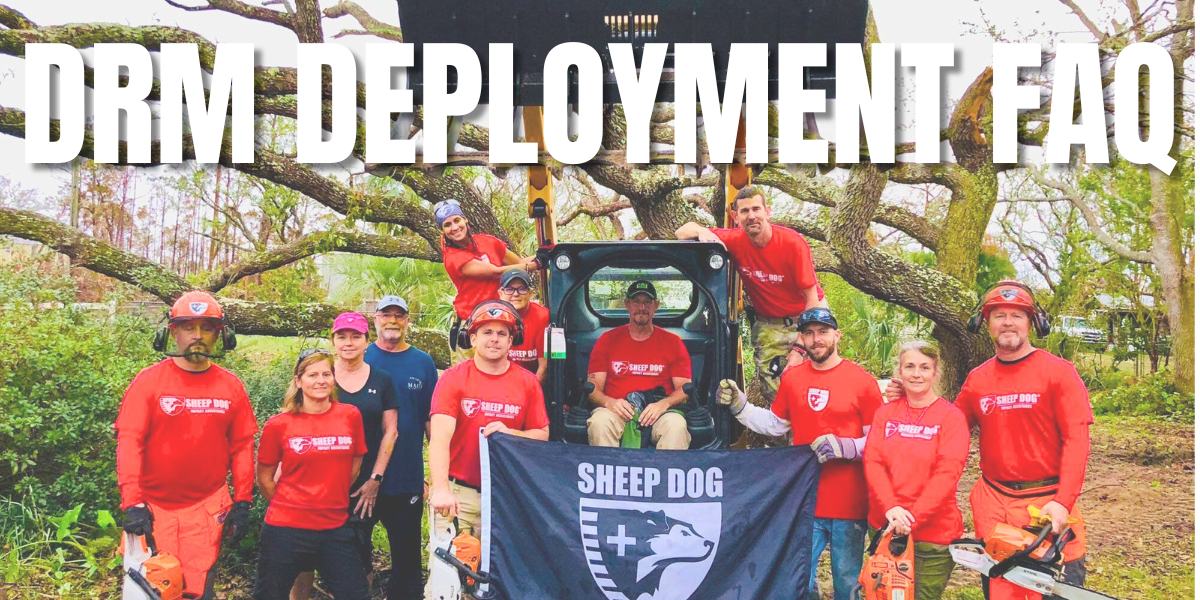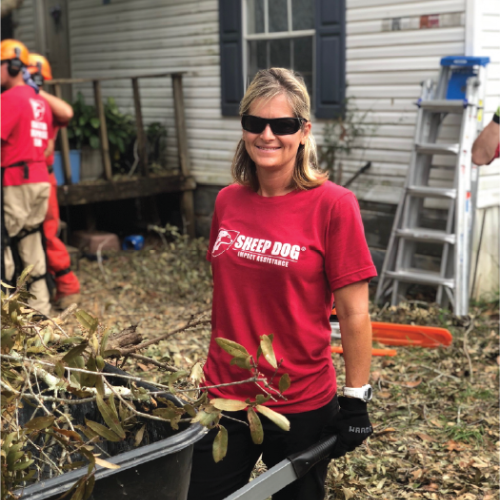

A Disaster Response Mission (DRM) is our boots-on-the-ground answer to natural or human-caused devastation. These missions support communities in crisis—providing critical assistance with evacuations, debris and tree removal, muck-out operations, roof and window covering, food and water distribution, sandbag placement, and other vital recovery efforts.
Who can deploy on a drm with sdia?
SDIA Disaster Response Teams are made up of dedicated Sheep Dogs ready to serve.
- Any SDIA Member/Volunteer who is registered and in good standing.
- Must complete the online registration form, which includes reviewing, signing, and submitting the SDIA Release and Waiver of Liability Form.
- Have the required gear (see Gear List).
- Be prepared to cover personal. expenses including travel, food, lodging, and other costs.
- Have valid medical/health insurance coverage.
When does sdia respond?
When disaster strikes, SDIA moves with purpose.
Following any natural or human-caused disaster, the National Office evaluates the situation against established criteria to determine whether to deploy a Disaster Response Team (DRT).
Once deployment is approved, a “Disaster Response Deployment Alert” is sent to Members and Volunteers via email and posted on social media.
DRTs are then mobilized and operate per SDIA’s Disaster Response Standard Operating Procedures (SOP) and checklists, ensuring organized, effective, and impactful action in the field.
When does sdia not respond?
Our priority is to serve effectively, without compromising safety.
While we are committed to serving in times of crisis, we do not deploy in situations that fall outside our scope or compromise safety. SDIA does not respond:
- To suppress large fires;
- When structures are heavily damaged, unstable, or deemed unsafe to enter;
- For hazardous materials cleanup or incidents involving radiological, chemical, or biological threats;
- To perform medical, fire, or search & rescue operations beyond our training level;
- In any situation that puts our members and volunteers in unnecessary danger.
What are SDIA's priorities?
We serve with purpose, safety, and integrity.
- Safety first: The well-being of our Members, Volunteers, and those we serve is always our top priority.
- We ensure we are part of the solution, not the problem—working effectively, responsibly, and collaboratively in every mission.
Why are DRMs important?
Helping is healing.
“You hurt for all the people affected, but you leave knowing you made a huge impact in their lives. What we do to help physically, also helps them mentally and emotionally, and that is the true reward of going on a DRM. And by helping them recover and heal, we are also helping ourselves in ways we might never have known.”

What policies are in effect During a drm?
We uphold these standards to ensure the safety, integrity, and effectiveness of our missions.
- You cannot deploy independently or represent SDIA without written permission from the CEO or Disaster Response Director.
- Discrimination and harassment of any kind will not be tolerated.
- No alcohol or non-prescribed drugs are allowed during a DRM.
- Unless otherwise directed, all weapons must be concealed during the DRM.
- Violation of these policies will result in removal from the DRM and a minimum one-year suspension from future SDIA deployments.
